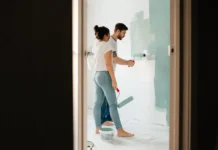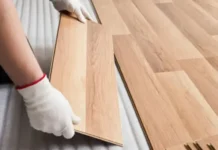A conversation is brewing, one that challenges long-standing stereotypes and pushes for change in a predominantly male industry. The plumbing field, often seen as a masculine domain, is on the cusp of a transformative era where equality and inclusivity are at the forefront.
The plumbing industry is experiencing significant job growth, a trend that offers an opportunity to tackle gender disparity head-on. The keyword here is ‘opportunity’. As the demand for skilled plumbers surges, it’s vital to see this as a chance to restructure and redefine the composition of the workforce. It’s time to transform this male-dominated landscape and give it a much-needed facelift by encouraging more women to participate and thrive. The potential for plumbing job growth offers a stage to illuminate the benefits of gender diversity, not just in terms of numbers but also in the richness of perspective and skills.
In this post, we will explore the past, present, and future of women in the plumbing industry, delving into the reasons for the gender gap, the challenges faced by women in this field, and the strategies to promote greater gender diversity. It’s time to balance the scales and nurture an industry that’s truly representative of the society it serves.
Historical Perspective
In the grand scheme of professional evolution, the journey of women in the plumbing industry has been one of slow but steady progress. In the early 20th century, the idea of women picking up wrenches and pipes was almost inconceivable, a reflection of the gender norms and societal expectations of the time. The world of plumbing was traditionally viewed as a ‘man’s job’, often because of its physical demands and the common perception that it was a dirty job unfit for women.
However, notable shifts began to occur during times of national emergency, such as World War II, when women stepped into roles previously held by men. These included positions in factories, engineering, and yes, plumbing. Though the progress was short-lived, with many women returning to traditional roles after the war, these periods planted the seed for a future where women could, and would, play a role in such industries.
Fast-forward to today, and women have indeed made strides into the plumbing field, though they still represent a small fraction of the workforce. The journey may have been slow and punctuated with setbacks, but each step forward marks a crucial milestone in the ongoing effort to balance the scales in the plumbing industry.
Current State of the Plumbing Industry
The plumbing industry today stands on the brink of significant change and growth. As we grapple with aging infrastructures, increased demand for sustainable water and heating systems, and the ongoing need for skilled tradespeople, the sector is experiencing a steady upswing. However, a glaring fact remains: the presence of women in the plumbing workforce is disproportionately low.
According to the U.S. Bureau of Labor Statistics, as of 2021, women make up a mere 2% of the plumbing, heating, and air-conditioning industry. This glaring gender disparity points to a continued perception of plumbing as a male-centric profession, but it also highlights a significant untapped potential.
Interestingly, it’s not a lack of interest from women that’s the issue. Programs aimed at training women in plumbing skills often see a high level of engagement and positive feedback. The stumbling block seems to lie more in outdated societal perceptions and barriers to entry, such as the availability of gender-inclusive apprenticeship opportunities and the overcoming of stigmas associated with women in trades.
Yet, with an anticipated plumbing job growth rate of 14% over the next decade (significantly higher than the average for other occupations), the industry finds itself in a unique position. The gap in the market provides not just a chance to boost the number of skilled plumbers, but to actively increase the number of women in these roles, addressing both a practical need and contributing to a more diverse and inclusive industry.
Importance of Encouraging More Women into Plumbing
Encouraging more women into plumbing is not simply about meeting quotas or ticking diversity boxes. It’s a strategic move with significant advantages, promising a future where the industry is as diverse and dynamic as the communities it serves.
Firstly, having more women in plumbing enriches the industry with a broader range of skills, ideas, and perspectives. Every individual brings their unique approach to problem-solving, communication, and customer service. Women, just like their male counterparts, have the capacity to innovate, lead, and excel in this field, positively impacting the quality and delivery of services.
Secondly, with the current shortage of skilled workers and an aging workforce, the plumbing industry faces a considerable challenge. This skills gap represents an untapped reservoir of potential if we could bridge the gender divide and attract more women to the field. As the industry experiences robust plumbing job growth, the inclusion of women could be a game-changer.
Moreover, societal perceptions are changing, with a growing appreciation for women in trades. Many customers, particularly women and the elderly, often feel more comfortable allowing a woman into their homes. Having a diverse workforce allows companies to cater to a wider customer base, thus enhancing business potential.
Lastly, it’s about building a culture of fairness, equality, and inclusivity in the industry. Having a gender-balanced workforce can contribute to a healthier, more inclusive work environment, encouraging mutual respect and collaboration.
Challenges Faced by Women in Plumbing
While the benefits of bringing more women into the plumbing industry are clear, women aspiring to enter this field often face a number of considerable challenges. These can be broadly categorized into societal perceptions, workplace barriers, and physical demands.
Societal Perceptions
One of the biggest hurdles women face is combating long standing societal norms and stereotypes. The prevailing belief that plumbing is a ‘man’s job’ can discourage women from considering it as a viable career option. This perception can create a lack of support from family and friends and may also result in a lack of encouragement from career advisors or mentors. The need to debunk these stereotypes is crucial to creating a more inclusive industry.
Workplace Barriers
Once women decide to pursue a career in plumbing, they may encounter barriers in the workplace. These can range from overt discrimination to unconscious bias, with some colleagues or managers still holding traditional views about gender roles. Additionally, the lack of female representation can result in feelings of isolation, making it hard to find mentors or role models within the industry. The lack of gender-neutral facilities on worksites can also pose a practical challenge.
Physical Demands
There’s no denying that plumbing can be a physically demanding job. Some may argue that this poses a challenge for women, but it’s important to stress that physical strength is only one aspect of the job. Modern plumbing is as much about problem-solving, technical know-how, and customer service as it is about physical labor. Dispelling the myth that women can’t handle the physicality of the job is another step towards equality.
Overcoming these challenges requires a concerted effort from industry leaders, educators, and society as a whole. As we chip away at these obstacles, we inch closer to an industry where gender is no longer a determinant of one’s ability to succeed.
Strategies to Encourage More Women into Plumbing
To bring about real change in the gender composition of the plumbing industry, a strategic approach is essential. The following strategies can help break down barriers and encourage more women to consider a career in plumbing.
Education and Outreach
Early exposure is key. Schools and educational institutions should actively promote plumbing and other trades as viable, rewarding career paths for girls. This could include career days, workshops, and apprenticeships specifically targeting female students.
Role Models and Mentoring
Seeing is believing. Highlighting successful women in the industry can inspire others to follow suit. Establishing mentoring programs where experienced female plumbers can guide and support newcomers is also beneficial.
Training and Development
Offering training programs specifically designed for women can help them gain the necessary skills and confidence. These should include not just technical training, but also guidance on dealing with potential discrimination or bias in the workplace.
Employer Policies
Employers can play a significant role in promoting gender diversity. This includes implementing inclusive hiring practices, providing gender-neutral facilities, and fostering a work environment that is respectful and supportive of all employees.
Industry Advocacy
Industry bodies and leaders must advocate for greater gender diversity. This could involve campaigns to raise awareness, funding for training programs, and initiatives to recognize and celebrate the achievements of women in the industry.
Conclusion
Balancing the scales in the plumbing industry is not a task for tomorrow, but an imperative for today. As the industry experiences significant growth, this pivotal moment presents an ideal opportunity to address the gender imbalance. By overcoming outdated stereotypes, breaking down barriers, and creating inclusive environments, we can encourage more women to embark on rewarding careers in plumbing. The advantages are clear: a more diverse workforce brings fresh perspectives, enriches the industry, and better serves our diverse communities. Ultimately, the goal is an industry that is as multifaceted, inclusive, and forward-thinking as the society it mirrors.
Read Also: Strategies for Successful Precious Metals Investing



































































